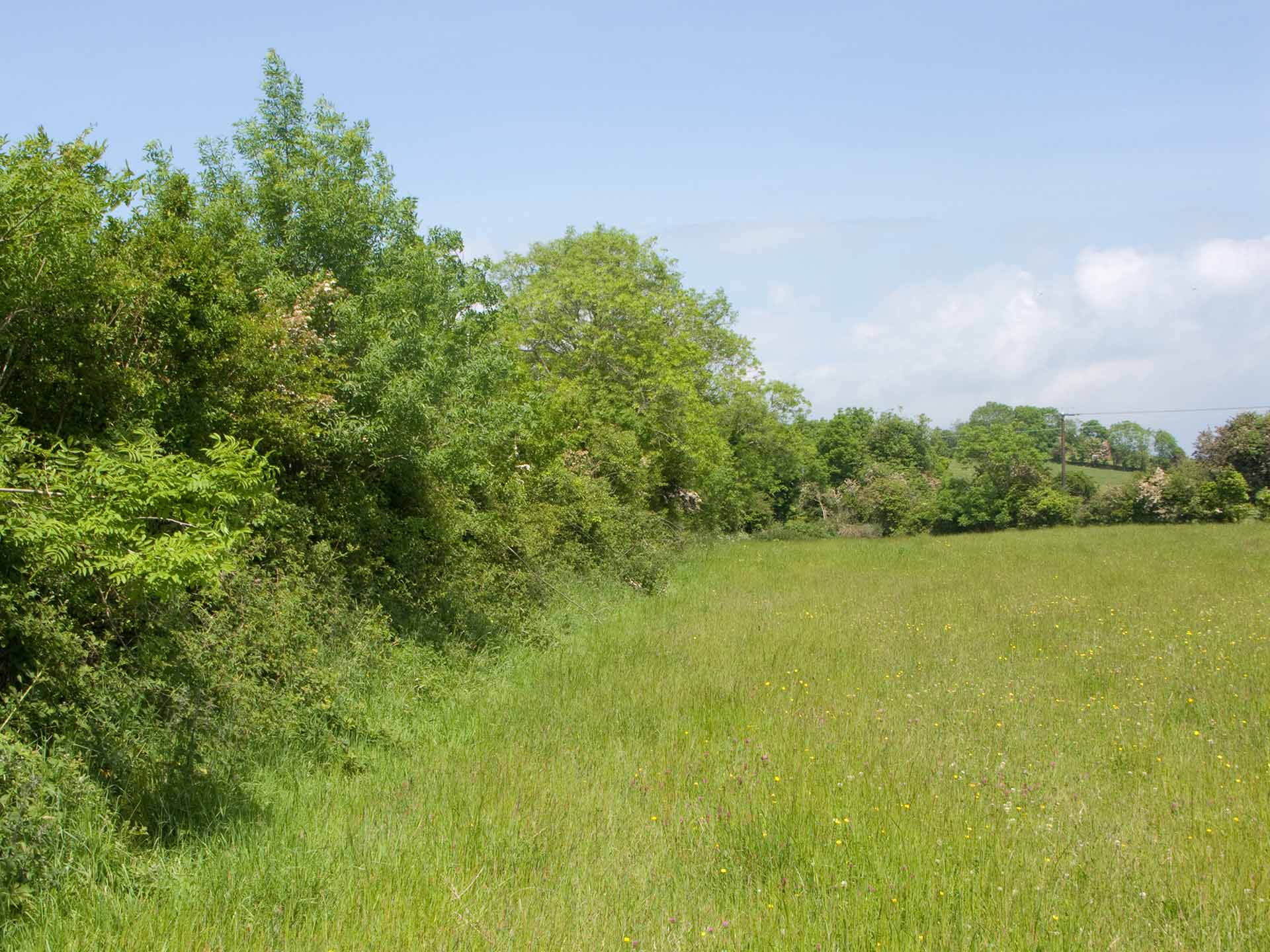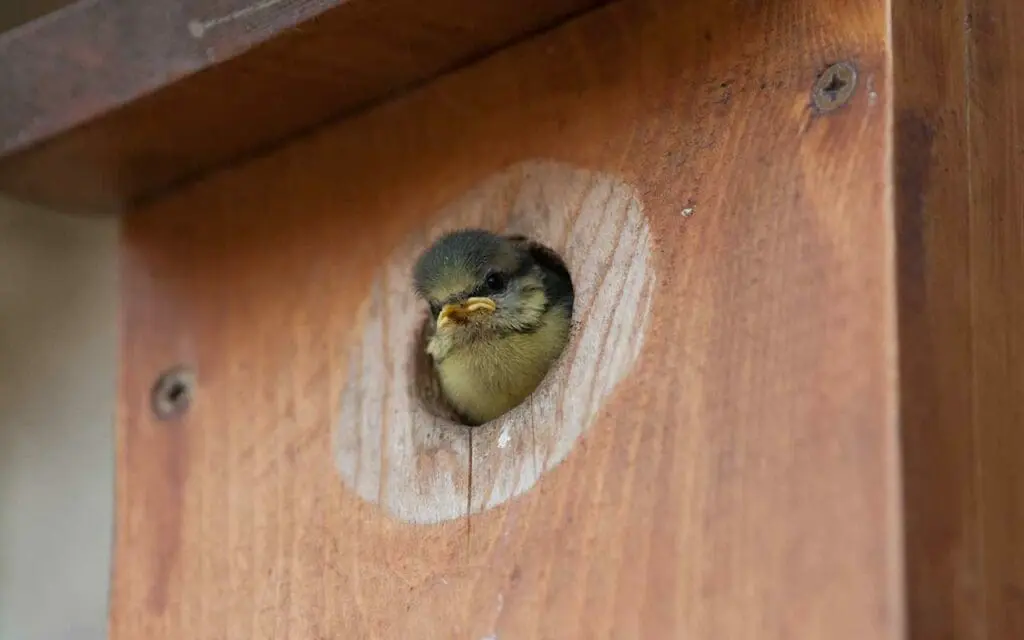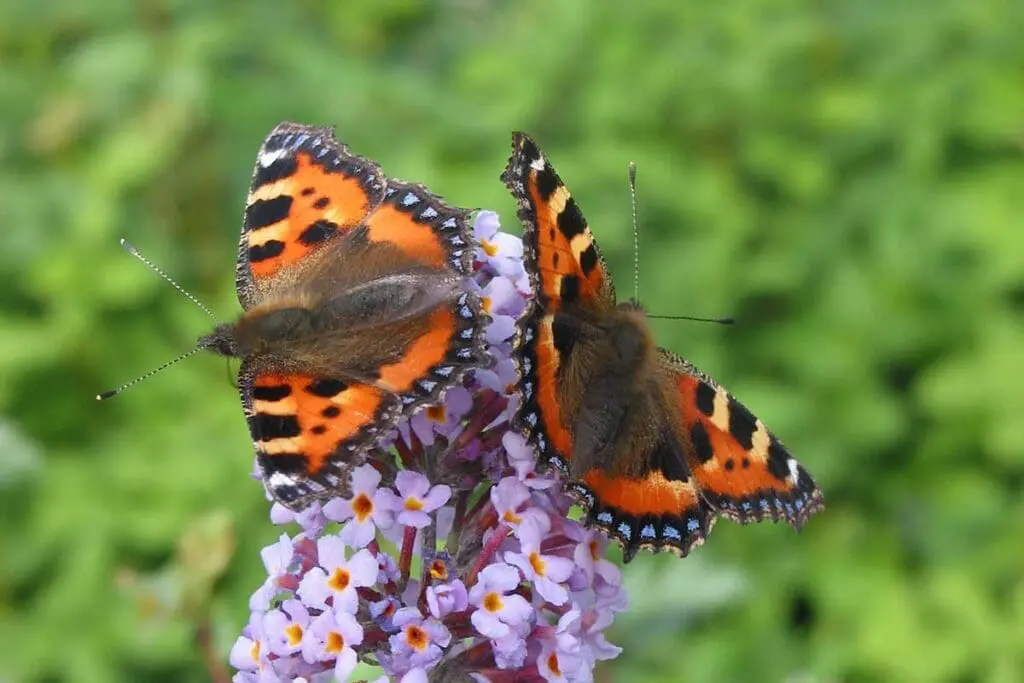Wildlife hedges are planted mainly for their wildlife value. Their use in controlling stock or people is not necessarily important. Species should be chosen because of their value for birds, pollinators and other animals, rather than for their ability to produce dense growth.
Before planting a wildlife hedge, consider its purpose. If the hedge is intended to be stock-proof, it needs to be made up of at least 75% thorny plants. Hawthorn, with the addition of blackthorn or holly, often provides the mainstay of stock-proof hedges.
Hawthorn provides a feast of berries in the autumn and flowers for insects in the spring. Other trees and shrubs that provide berries or seeds for birds are also desirable – think of rowan, crab apple, spindle, guelder rose and elder amongst others.
Planting hedgerow trees, such as oak or ash will attract more wildlife and, if allowed to grow, will provide shelter and shade.
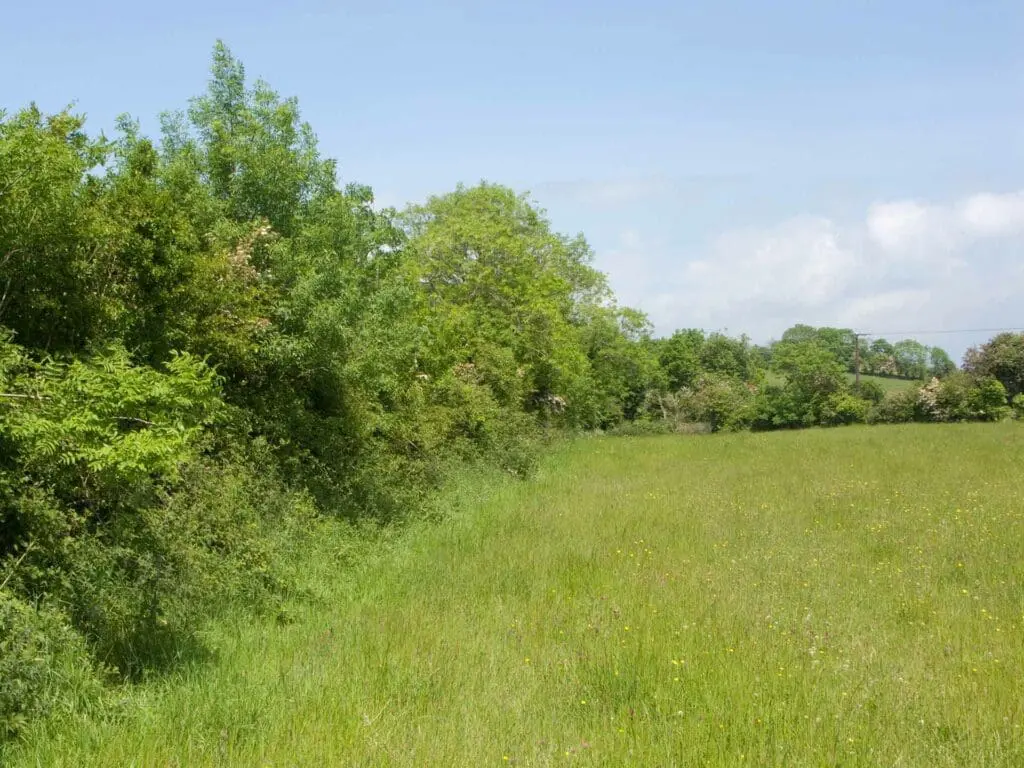
Considerations
Size of plants
Hedging plants are available as ‘bare-root’ – with no soil on their roots – or in containers such as ‘rootrainers’. Bare-root plants are available in late autumn when the leaves have fallen. Roottrainer plants may be available all year round. Plants in larger containers, such as holly and yew, do not survive as bare-root plants.
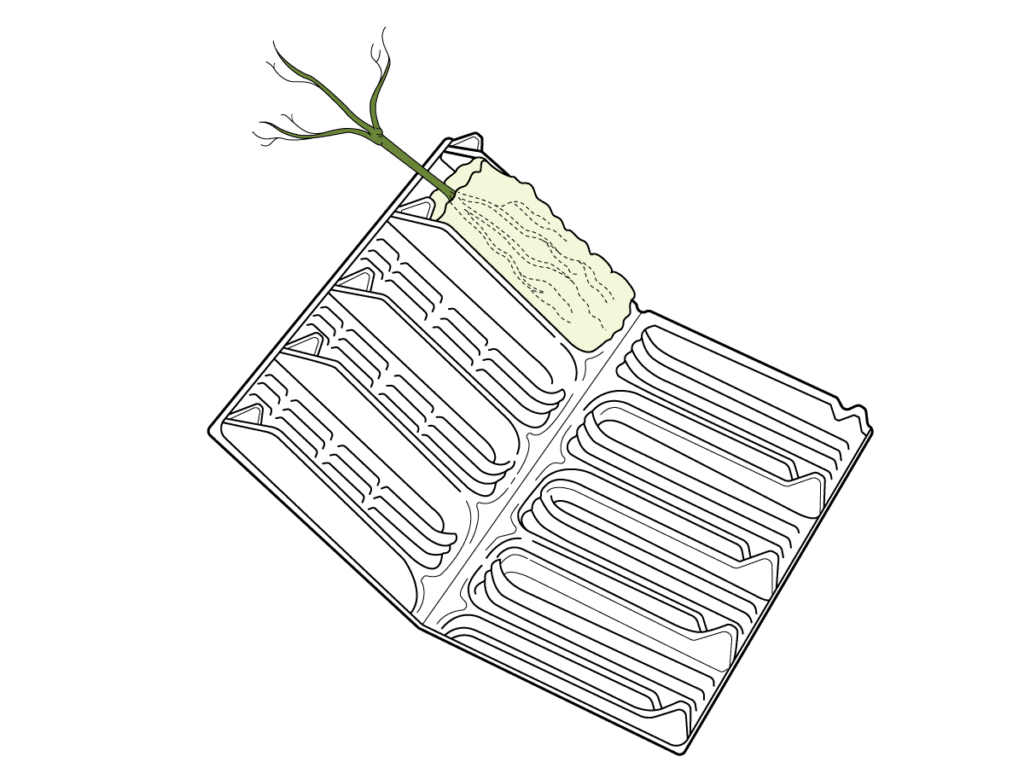
Small plants (40-60cm tall) are cheaper, have a higher survival rate and often grow more quickly than larger ones.
Planting layout
We recommend planting a double hedge. Plant a formation that staggers the plants in opposite rows so that as growth occurs, gaps will be filled. A distance of 25-50cm is recommended between plants and 35-40cm between rows.
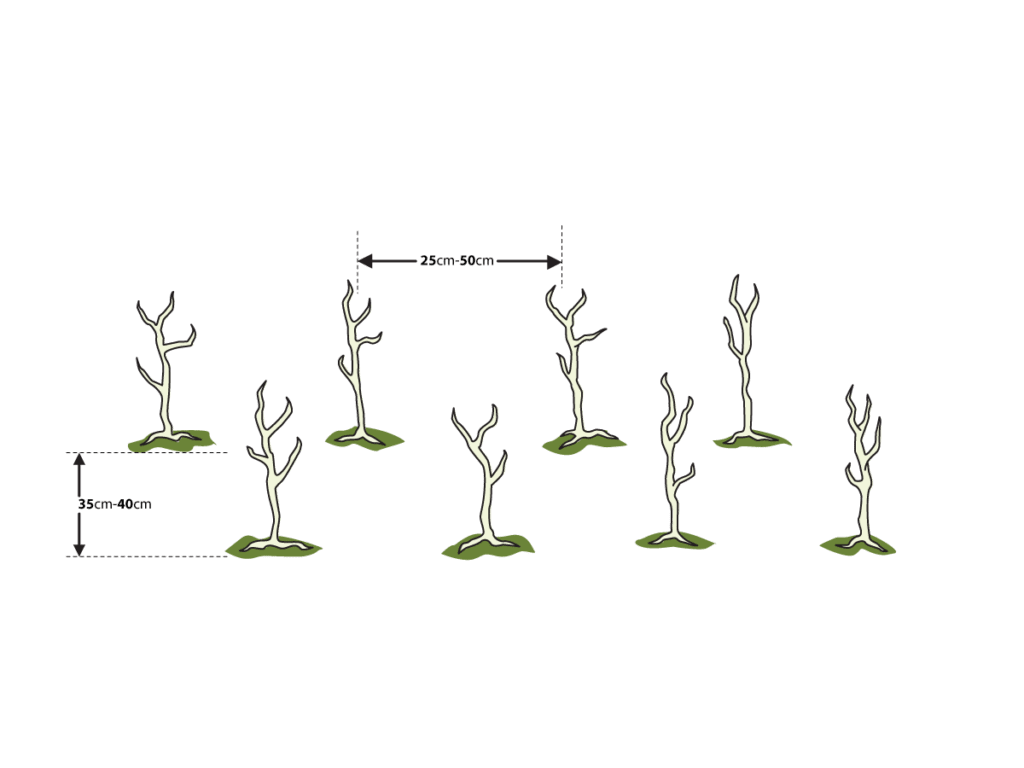
To reduce the cost of your hedge, or if plants are in short supply, you can plant a single row of trees spaced about 20-25cm apart. These will generally be less stock-proof than a double row, but future management of the hedge will determine this more than the number and spacing of your initial planting.
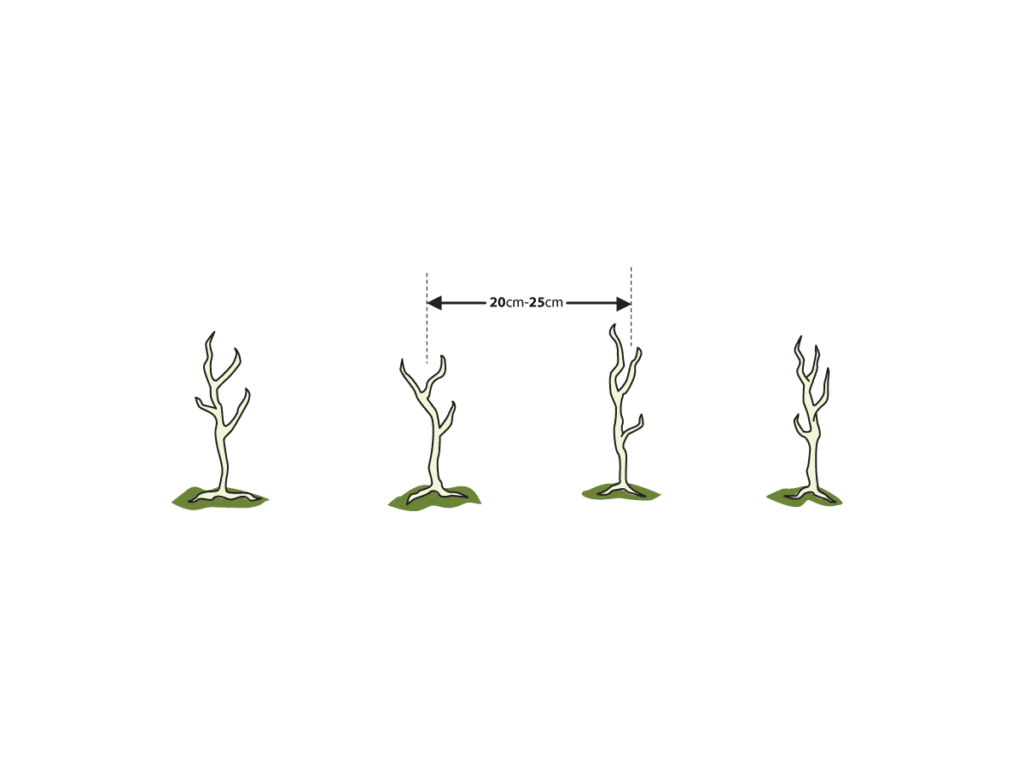
Numbers of plants needed for a wildlife hedge
To estimate the number needed, measure the length to be planted and allow the following:
100 metre double row stock-proof hedge using 8 plants per metre = 800 trees
- 600 hawthorn (at least)
- 10 holly
- 50 mixed trees (ash, oak, crab apple, rowan, etc.)
- 100 blackthorn
- 40 hazel
To keep the cost down and to produce an effective hedge, the 600 hawthorn (or even more) should always be planted. This is a typical mix, but other native species can be substituted.
100 metre single row wildlife hedge using 4 plants per metre = 400 trees
- 200 hawthorn and blackthorn (a mix of both species)
- 35 holly
- 150 mixed flowering shrubs (guelder rose, spindle, crab apple, elder, etc.)
- 15 hedgerow trees (oak, ash)
Some people suggest planting dog rose in the initial mix (instead of some of the mixed trees perhaps), but they can grow quickly, although it’s easier to plant them at the beginning than to add them later!
Planting tips
- Make sure plants are well watered before applying a 2 inch/5cm layer of mulch to suppress weeds. This is only practical on short lengths of hedgerow.
- Where possible, trim plants to approximately one third immediately after planting. This sounds drastic, but it encourages strong, bushy growth.
The plants will respond according to the preparation made at the time of planting, and also to the watering, feeding and weeding carried out in the first few years.

